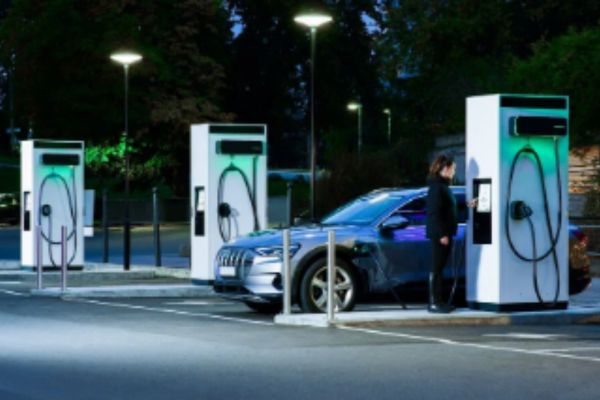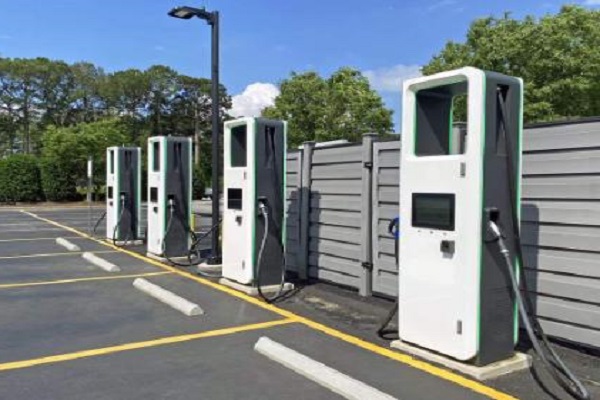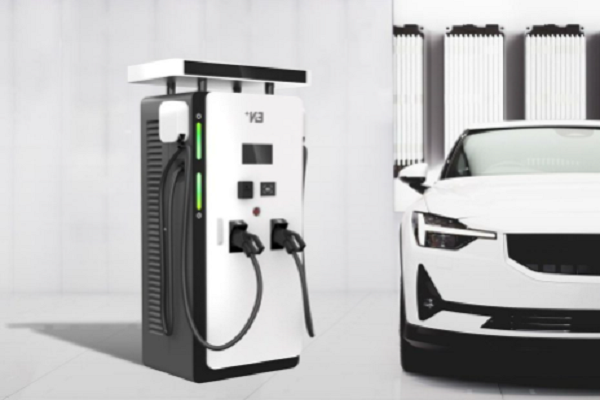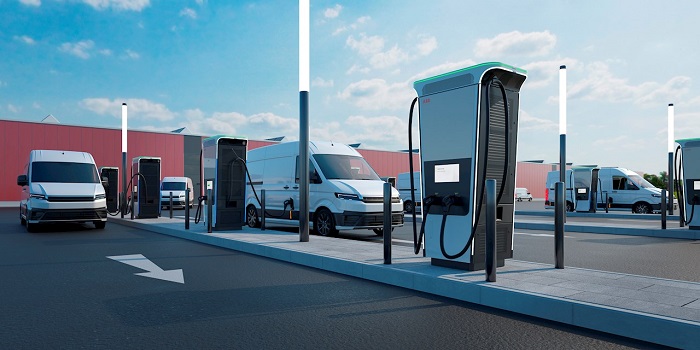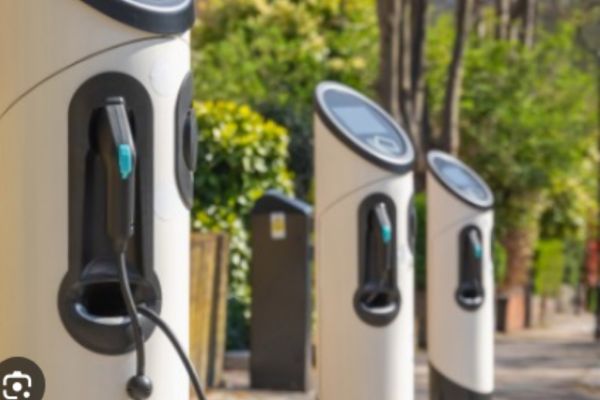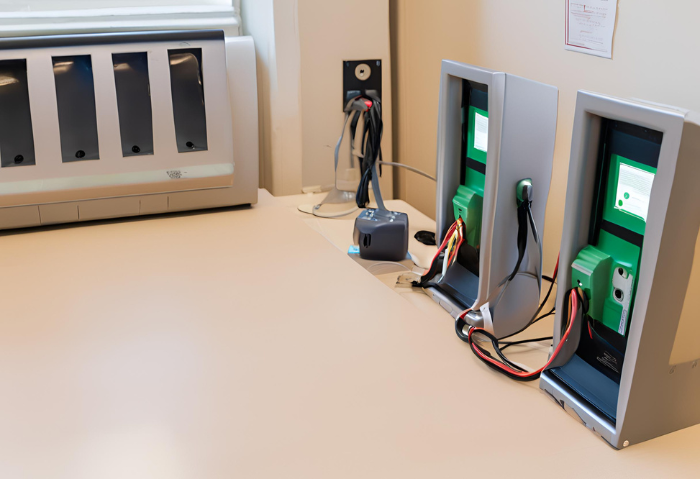Level 3 Charger: The Ultimate Home Charging Solution (Sale)
Looking for a Level 3 electric car charger for sale? Charge your electric vehicle quickly and easily with our advanced level 3 electric vehicle charger! This charger is perfect for home or business use, providing quick and efficient charging of your electric vehicle. With its compact design and ease of use, this charger is ideal for all electric vehicle charging needs.
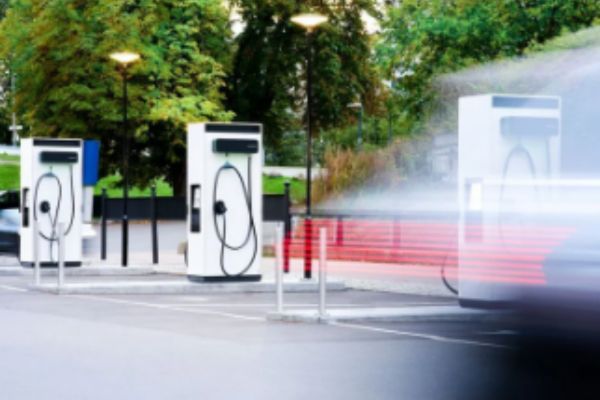
Types of Electric Car Chargers
Electric car chargers are crucial for supporting the use and expansion of electric vehicles (EVs). Here’s a breakdown of the different types of chargers:
Level 1 Chargers
Basics: Level 1 chargers are the most basic type of electric vehicle (EV) chargers. They use a standard 120-volt AC outlet, which is common in most homes and businesses.
Technology: Typically, the vehicle comes with these chargers, which can plug into any regular electrical outlet without the need for special equipment or installation.
Charging Speed: Level 1 chargers provide a slow charging speed, adding approximately 2–5 miles of range per hour. This means they are best suited for overnight charging or for users who do not drive long distances daily.
Use Case: Ideal for individuals who drive infrequently or have short commutes, as well as for emergency charging when other options are unavailable.
These chargers are a significant step up from Level 1, which operates at 240V (like a typical home appliance such as a dryer). Level 2 chargers are common in both residential and commercial settings. They offer faster charging, typically delivering about 12 to 80 miles of range per hour of charging, making them suitable for both home use and public stations.
Level 2 Chargers
Basics: Level 2 chargers, which use a 240-volt AC outlet similar to that of large household appliances like dryers, are more powerful than Level 1 chargers.
Technology: These chargers require a dedicated charging station, which frequently necessitates professional installation. They are common in both residential and public settings.
Charging Speed: Level 2 chargers can add about 10–60 miles of range per hour, significantly reducing the charging time compared to Level 1 chargers.
Use Case: Suitable for daily home charging for EV owners who drive more frequently or longer distances. They are also prevalent in public charging locations, such as parking lots, workplaces, and shopping centers.
Level 3 chargers (DC fast chargers)
Basics: Also known as DC fast chargers, Level 3 chargers provide the fastest charging speed available.
Technology: They use direct current (DC) instead of alternating current (AC), which allows for much quicker energy transfer. Commercial and public charging stations along highways and in busy urban areas typically house these chargers, which require specialized, high-powered equipment.
Charging Speed: Level 3 chargers can add 60–100 miles of range in just 20 minutes, depending on the vehicle and charger specifications.
Requirements: They often need significant electrical infrastructure and are more expensive to install and maintain.
Use Case: Ideal for long-distance travel and commercial settings where rapid charging is required, such as at rest stops or high-traffic areas.
Portable Chargers
Basics: Portable chargers provide a flexible charging solution for EV owners, allowing them to charge their vehicles from various power sources.
Technology: These chargers can be plugged into standard household outlets or higher power outlets, and they often come with multiple adapters for different plug types.
Charging Speed: The speed varies depending on the power source; they typically charge slower than Level 2 and 3 chargers but offer convenience and flexibility.
Use Case: Perfect for EV users who travel frequently, have unpredictable charging needs, or lack access to fixed charging stations. They are also useful in emergencies or for charging in remote locations where permanent infrastructure is not available.
Wireless EV charging
Wireless EV charging is still in its early stages of development, but it has the potential to revolutionize the way we charge electric cars. Wireless chargers use inductive charging to transfer power from a charging pad to the car’s battery. This would eliminate the need for cords and plugs, making charging more convenient.
The type of charger you choose will depend on your needs and budget. Level 1 chargers are a good option for home charging, while Level 2 chargers are a good option for both home and public charging. Public charging stations typically only offer Level 3 chargers, which are the fastest option. Portable chargers are a great option for on-the-go charging, and wireless chargers have the potential to revolutionize the way we charge electric cars in the future.
Technical specifications for Level 3 chargers
Charging Speed
Overview: Designed to recharge electric vehicles (EVs) much more quickly than Level 1 and Level 2 chargers, Level 3 chargers are also known as DC fast chargers.
Speed: These chargers can typically replenish an EV battery from 0% to 80% in about 20–40 minutes, depending on the battery capacity and the specific charger.
Rate: They can deliver a range of 60–100 miles of charge in approximately 20 minutes. The charging speed decreases as the battery approaches full capacity.
Connector Types
Here’s where things get a little complicated. There are three main connector types used for Level 3 charging:
-
- CHAdeMO: This is a popular option in Asia and Europe.
-
- CCS (Combo Charging System): This is gaining traction in North America and Europe. It combines AC and DC charging into one connector.
-
- Tesla Supercharger: This is a proprietary connector specific to Tesla vehicles.
It’s crucial to ensure compatibility between your EV’s charging port and the station’s connector type before plugging in.
Power Output (kW Rating)
As mentioned earlier, Level 3 chargers come with varying kW ratings. A higher kW rating signifies a faster charging speed. However, this doesn’t necessarily mean all EVs benefit equally. The car’s battery capacity and its ability to handle the faster charging speed play a role. Generally, larger battery packs take longer to charge, even with a high-kW charger.
Installation Requirements
Level 3 chargers are heavyweight contenders in terms of infrastructure needs. They require a high-voltage power source (typically 480V or 1000V) and significant electrical upgrades to handle the high power demands. Additionally, fast charging necessitates the use of cooling systems to control the generated heat. Because of these complexities, setting up a Level 3 station is a substantial undertaking compared to Level 1 or 2 chargers.
Efficiency and energy use
While convenient, Level 3 chargers aren’t perfect when it comes to efficiency. The conversion process from AC grid power to DC for the battery creates some energy loss. However, technological advances are improving efficiency rates. Additionally, compared to leaving a Level 2 charger plugged in for hours, the short charging times help mitigate overall energy consumption.
Purchasing Level 3 Chargers
While Level 3 chargers offer the ultimate charging speed, they’re not exactly household appliances. Here’s what you need to know before considering purchasing one:
Price Ranges
Brace yourself: Level 3 chargers are a significant investment. The price range can vary widely depending on the power output (kW rating), brand features, and sophistication. Basic models start around $40,000, while high-powered options can reach a staggering $175,000. Remember, this is just the equipment cost.
Where to buy
Due to their specialized nature, Level 3 chargers aren’t readily available at retail stores. Here are your best options:
- Many manufacturers, such as ABB, Siemens, and Efacec, sell directly to businesses and organizations.
- Electrical Equipment Distributors: These companies specialize in high-voltage electrical equipment and might carry Level 3 chargers.
- Online Marketplaces: While uncommon, some industrial online platforms might list Level 3 chargers. However, proceed with caution and ensure reputable sellers have proper certifications.
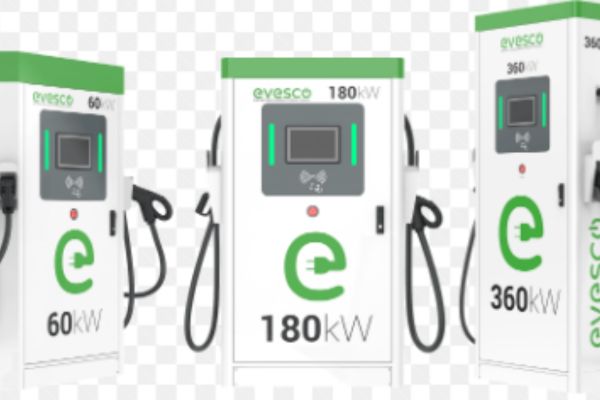
Warranty and Support
Given the complexity of these chargers, a comprehensive warranty and reliable customer support are crucial. Look for warranties covering at least 2–3 years, with options for extended coverage. Ensure the manufacturer or seller offers technical support and access to qualified technicians for installation, maintenance, and troubleshooting.
Government Incentives and Subsidies
The good news? Many governments and local authorities offer incentives to promote EV infrastructure development. These can come in the form of tax credits, rebates, or grants to help offset the cost of purchasing and installing Level 3 chargers. Research local and national programs to see what financial assistance might be available in your area.
Installation Services
Installing a Level 3 charger is no DIY project. Partner with a licensed electrician who is experienced in high-voltage electrical work and knowledgeable about EV charging station installations. They can ensure proper permitting, handle the complex electrical work, and guarantee a safe and functional charging station.
While owning a Level 3 charger offers ultimate charging speed, it’s a significant investment with specific requirements. Consider the cost, legalities, installation complexities, and potential benefits before taking the plunge.
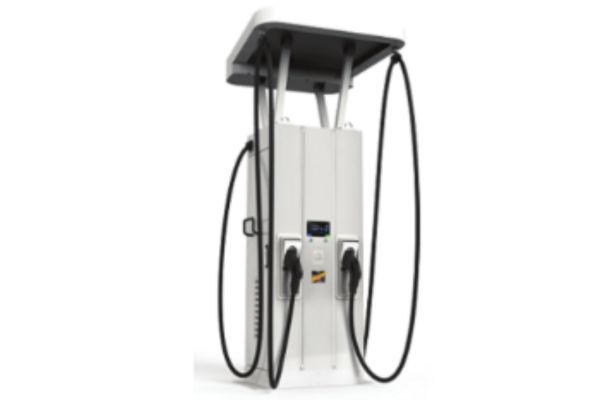
Location planning for installation
Considerations for home installation
- Feasibility:
Space Requirements: Make sure there is enough space in the garage or driveway to accommodate the charging unit and provide easy access for the vehicle.
Power Supply: Check if the home’s electrical system can handle the high power demands of a Level 3 charger, which typically require a three-phase power supply and potential upgrades to the electrical panel.
Consider the cost of the charger itself, installation, and any necessary electrical upgrades. Level 3 chargers are significantly more expensive than Level 1 or Level 2 chargers.
- Installation Requirements:
Professional Installation: Due to the complexity and high power levels involved, professional installation by a licensed electrician is necessary.
Permits: Obtain any necessary permits from local authorities, ensuring compliance with electrical codes and safety standards.
Cooling and Ventilation: High-power chargers generate heat, so adequate cooling and ventilation may be required to ensure safe operation.
Setting up a Public Charging Station
- Site Selection:
High Traffic Areas: To maximize usage, ideal locations include shopping centers, highways, transit hubs, and areas with high vehicle turnover.
Accessibility: Ensure the site is easily accessible, well-lit, and has sufficient space for multiple vehicles to charge simultaneously.
- Infrastructure:
Electrical Upgrades: Transformers and high-capacity power lines, among other significant electrical infrastructure, may be required.
Safety Measures: Implement safety features such as barriers to protect charging equipment and users, clear signage, and emergency shutoff mechanisms.
- User Amenities:
Convenience: Provide amenities such as restrooms, Wi-Fi, seating areas, and retail options to enhance the user experience during charging times.
Payment Systems: Install user-friendly payment systems that accept multiple forms of payment, including credit cards, mobile payments, and subscription-based services.
Zoning and Permits
- Legal Requirements:
Zoning Laws: Make sure the location you’ve chosen complies with local zoning laws and land use regulations, as these may specify where you can install charging stations.
Building Codes: Follow local building codes for electrical installations, safety standards, and environmental considerations.
- Permits:
Ensure you obtain the necessary electrical permits for installation, and ensure that local authorities inspect and approve all work.
Planning Approvals: For public or commercial installations, additional planning approvals may be required, including site plans and environmental assessments.
Utility Impact Assessment
- Grid Impact:
Demand Analysis: Conduct an analysis of the local electrical grid’s capacity to handle the increased demand from Level 3 chargers, particularly in areas with limited infrastructure.
Peak Load Management: Implement strategies to manage peak loads, such as smart charging systems that distribute the load and schedule charging during off-peak hours.
- Upgrades:
Infrastructure Improvements: Work with local utilities to identify any necessary upgrades to transformers, substations, and power lines to support the installation of Level 3 chargers.
To offset the cost of infrastructure upgrades, explore available incentives and rebates from utilities or government programs.
Accessibility and Convenience
- Design Considerations:
User-Friendly Layout: Design the charging station layout to ensure ease of use, with clear instructions and easy-to-reach connectors.
ADA Compliance: Ensure the site is compliant with the Americans with Disabilities Act (ADA), providing accessible parking and charging options for users with disabilities.
- Location Features:
To provide a convenient and pleasant experience for users, choose locations near amenities such as restrooms, food services, and retail stores.
Signage and Navigation: Use clear signage to guide users to the charging station and provide information on how to operate the chargers.
By carefully considering these factors, we can optimize the installation of Level 3 chargers to meet the needs of both private and public users, thereby enhancing the overall efficiency and accessibility of the EV charging network.
Usage and Operation
Level 3 chargers, also known as DC fast chargers, are lifesavers for long trips, offering a quick top-up in under 30 minutes. Here’s a breakdown of their usage and operation:
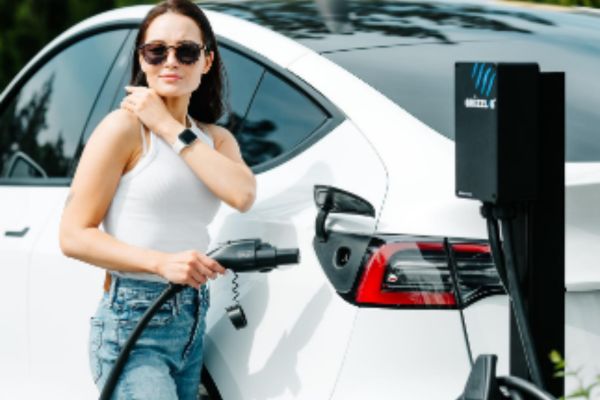
User Interface and Accessibility
- Simple Interface: Level 3 chargers typically have a user-friendly touchscreen interface. It will guide you through the charging process, displaying charging status, estimated time, and connection instructions.
- App Integration: Many charging networks offer mobile apps that allow you to locate stations, check availability, initiate charging remotely, and pay for your session.
- Payment Systems: At Level 3 chargers, payment options can vary. Common methods include credit cards, contactless payments, and charging network memberships.
Maintenance and upkeep
Qualified technicians must regularly maintain Level 3 chargers. This ensures smooth operation, safety, and optimal charging performance.
User Maintenance: As a user, you typically don’t need to perform maintenance. However, reporting any malfunctions or damage to the station operator is crucial.
Safety Standards
-
- Safety First: Level 3 chargers adhere to strict safety regulations to protect users and equipment.
-
- User Precautions: Always follow the instructions displayed on the charger. Look for features like emergency shut-off buttons and grounding systems. Never attempt to tamper with the charger or force a connection.
Network membership and fees
- Network Benefits: Joining a charging network can offer benefits like wider station access, exclusive discounts, and streamlined payment options.
- Membership Costs: Charging network memberships may have monthly fees or per-kWh charges. Evaluate your charging habits to determine whether a membership is cost-effective.
- Non-Member Rates: You can often use Level 3 chargers without a membership, but per-kWh rates may be higher.
Additional Tips
-
- Plan Your Route: Locate Level 3 charger stations along your travel route.
-
- Arrive Prepared: Have your charging adapter handy and know your car’s charging port location.
-
- Time Management: Level 3 chargers are ideal for quick top-ups, not full charges. To optimize your trip, plan your charging time.
Understanding these aspects allows you to confidently use Level 3 chargers and enjoy the convenience of fast electric vehicle charging.

Henry Michael is a leading expert in EV charging station research, specializing in innovative solutions for electric vehicle infrastructure. With a passion for sustainability and technological advancement, he is dedicated to advancing the accessibility and efficiency of EV charging worldwide.

